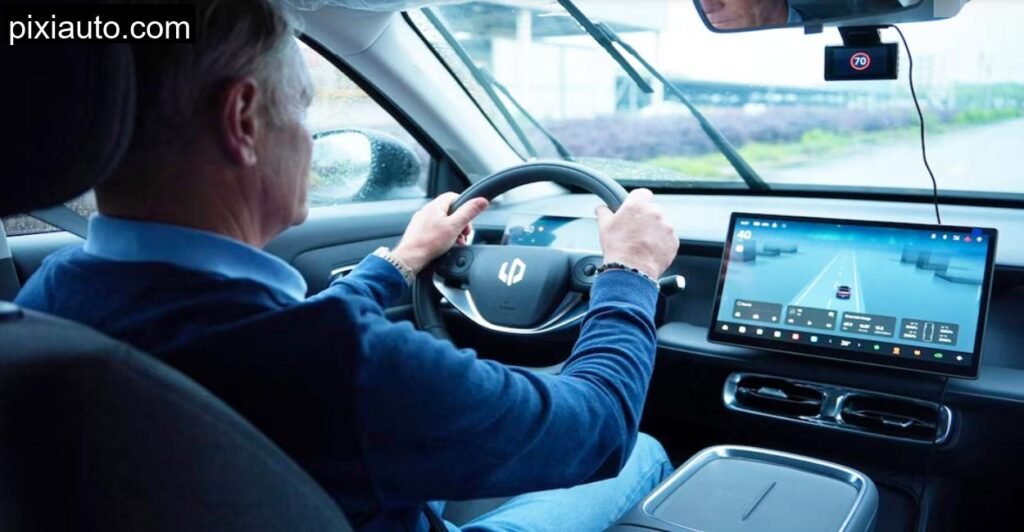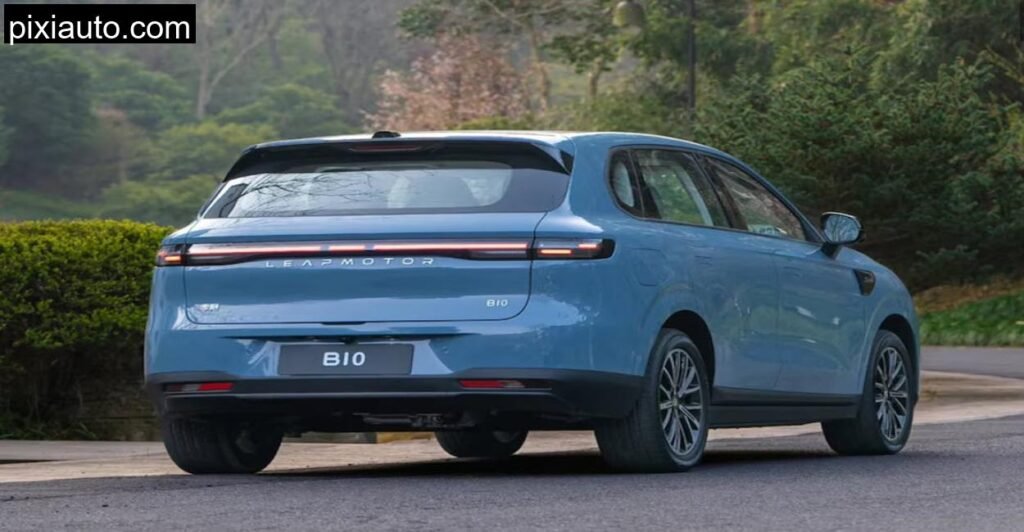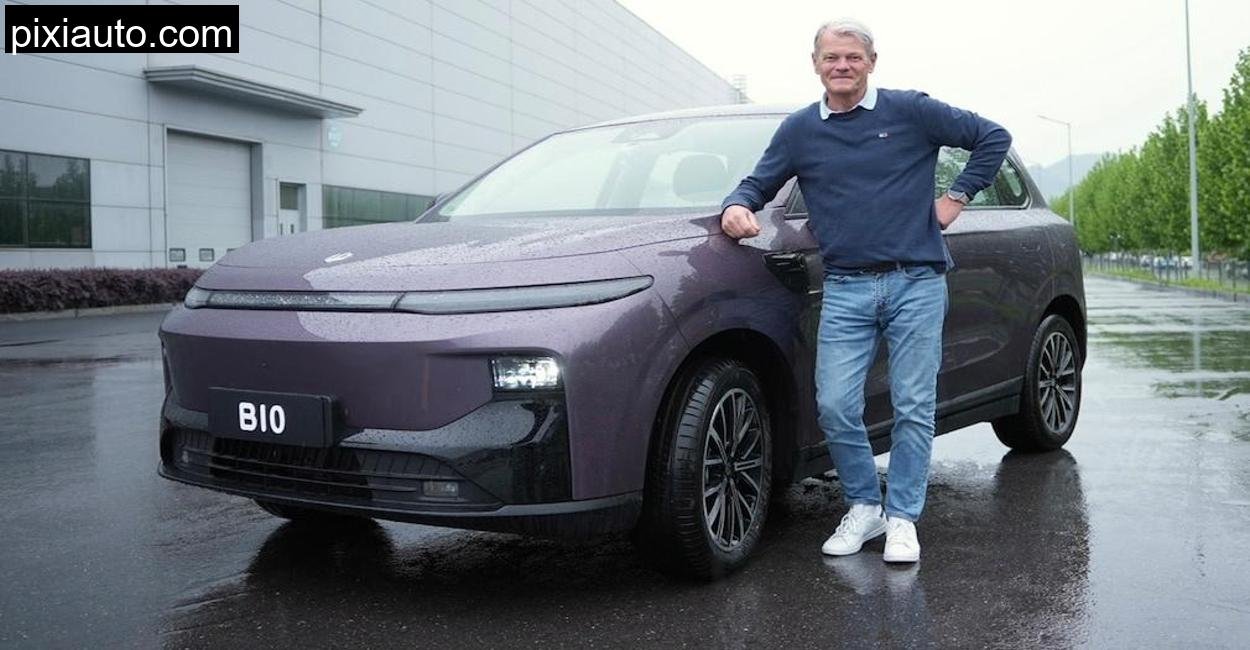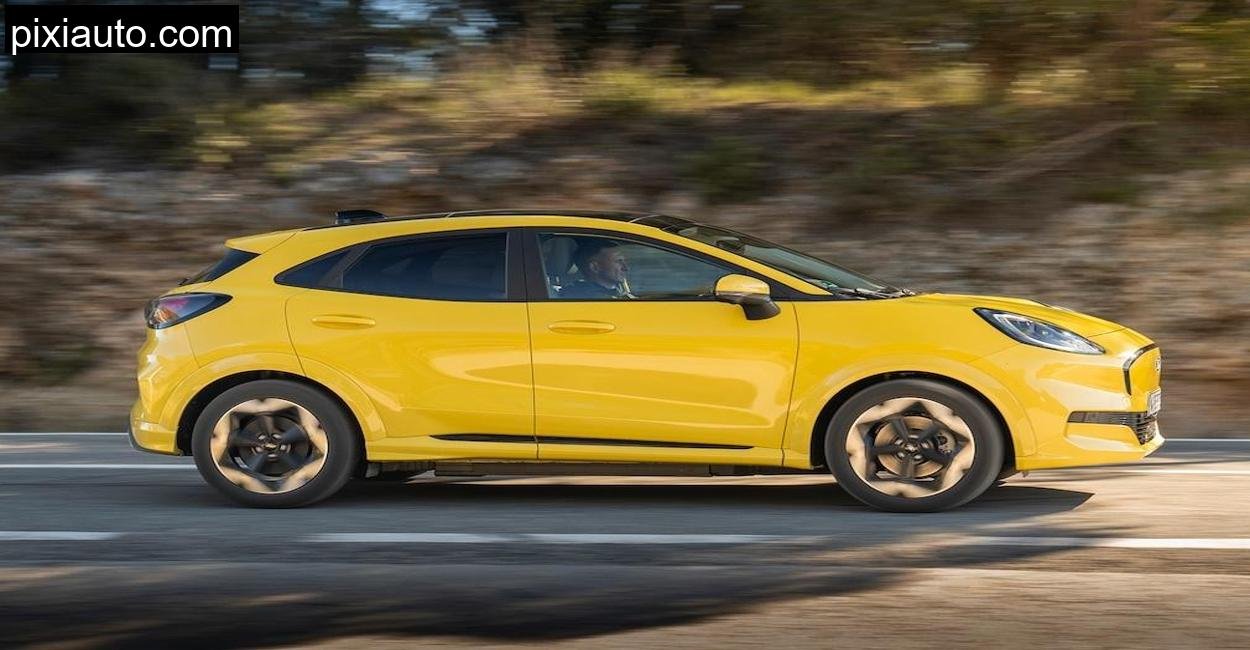I drove through the winding birch, fringed backroads of the Drawehn with something unusual humming softly beneath me, a fully electric SUV the size of a Tiguan, priced closer to a base, model Golf. It’s called the Leapmotor B10, and if you haven’t heard of it yet, you soon will. At first glance, it might look like another affordable Chinese newcomer with big ambitions. But once I spent a day with it, loading it up, pressing it into tight curves, and charging it under real, world stress, it started to feel more like a message. One that Stellantis, Leapmotor’s new European partner, is delivering loud and clear: You no longer have to spend premium to get premium.
The Drawehn ridge, nestled between the Wendland and the Elbe, gave the B10 its proving ground. Open straights where I could play with acceleration. Tight corners between forest clearings to test the undercarriage. Village cobblestones and lazy slopes for steering feel. I had the 238 hp version with the bigger 67.1 kWh battery, freshly calibrated for European roads. The B10 whispered through the countryside with that typical electric poise, but with a build and refinement that defied every notion I had about budget EVs.
Design That Doesn’t Shout, But Stays

As I approached the Leapmotor B10 parked in the early mist of a Drawehn sunrise, it didn’t make an effort to dazzle me. But neither did it fall flat. The clean profile, soft yet taut lines, and understated LED light bands running across both front and rear reminded me of the restraint German brands once practiced before everyone got obsessed with fake grilles and aggressive cuts.
The B10 is built on Leapmotor’s new “3.5” EV platform, which isn’t just new, it’s advanced. It’s got a 400V architecture now, but the system is ready for 800V if demand ever nudges upward. The Stellantis partnership means that despite its Chinese DNA, the B10 could be built locally, potentially at Opel’s Zaragoza plant. That’s a game, changer in reducing tariffs and improving logistics. From design to delivery, the B10 feels tailored for Europe, not imported blindly into it.
On the inside, the wow, factor ramps up. A full, width dashboard is dominated by a 14.6, inch central touchscreen. Every control you can think of, climate, drive mode, audio, even mirror adjustments, is touch, or voice, operated. Yes, there’s a bit of a learning curve, but it never felt laggy or gimmicky. While purists might miss physical buttons, the system is impressively quick and easy to use once you settle in. Fit and finish? Better than a base ID.4, with materials that don’t squeak or shine in the wrong way.
Performance on Rural Tarmac
Out on the road, the Leapmotor B10 drives like it’s got something to prove. Rear, wheel drive is standard, and it makes for a pleasant balance in daily conditions. My 238 hp tester had enough punch to overtake tractors climbing slow slopes or to leap off a village roundabout without fuss. The 0, 100 km/h isn’t publicized with Ferrari flair, but it’s brisk, somewhere between 7 and 8 seconds, by my feel.
Where it starts to show its value is in power delivery. Smooth, progressive torque. You press, and it responds, not aggressively, but with confidence. There’s a bit of looseness in the steering, especially in sharp bends, and it could benefit from a tighter rack. I was told final tuning for European roads is still ongoing, and I can believe it. On the uneven stone roads of Schnega and Güstritz, the suspension felt a bit floaty, not crashy, just not as settled as something like a Kuga or Q4 e, tron.
Braking was solid, though, and regen settings are customizable through the screen. I found the medium regen best suited for rural driving, especially when descending toward the Elbe plains where more control felt needed. Wind noise? Barely there, even at 120 km/h on a brief Autobahn stretch. Tyre hum was more noticeable, but no worse than an average compact SUV.
Real, World Practicality and Features

Leapmotor didn’t just cut costs, they redistributed value. That panoramic roof I had? Standard. LED lights all around? Standard. Adaptive cruise, 360, degree camera, wireless Apple CarPlay and Android Auto, heated seats, power tailgate, all included. It’s laughable when you think about what a European brand would charge for that bundle. And I tested every bit of it.
There’s a generous 420, liter boot, expandable to 1415 liters when you fold the rear seats. I managed to fit my 29er mountain bike with the front wheel off. There’s even a frunk, which swallowed my charging cables and compressor pump easily.
The seats aren’t overly bolstered but offered solid support for my lower back on a four, hour stint through the uplands and forest roads. Ventilation is good, though no seat cooling yet, possibly reserved for higher trims. Space in the second row is better than expected; even with my driver seat pushed far back, I could sit behind myself comfortably.
Charging and Range Impressions
Over the course of my 220 km test day, I managed to deplete the battery to just over 30 percent. Leapmotor claims a range of about 600 km on the larger 67.1 kWh pack under CLTC standards, which is optimistic. I saw closer to 410, 440 km in mixed use, and that’s more than acceptable for a car this size and weight.
Charging topped out at 88 kW on a 100 kW DC charger I found in Uelzen. It took 31 minutes to go from 28 to 82 percent. That’s no record, but it’s serviceable. The onboard charger supports 11 kW AC, and I used it overnight at a guesthouse with a wallbox. No issues, no quirks.
What’s exciting is that the platform already supports 800V, which means faster charging could be just a firmware update or next, gen trim away. As for heat management, the battery and drivetrain handled repeated starts and hill climbs without noticeable fade or derating. In early May temps, that’s a good sign.
Pricing That Redefines the Game
In China, this car starts at the equivalent of €12,000. European pricing will land just under €30,000 when it arrives this fall. That’s insane. For context, a base Tiguan starts closer to €35,000, and you’ll still have to pay extra for adaptive cruise and a digital cockpit. Leapmotor hands it all to you upfront, with no silly paywall.
And unlike previous Chinese newcomers, Leapmotor isn’t here solo. With Stellantis’ network of showrooms and workshops, there’s actual after, sales support. I stopped at a dealership in Lüchow, yes, a real Stellantis outlet already showcasing the Leapmotor C10, and they confirmed B10s will be available to test from September.
The long, term question, of course, is residuals. But let’s be honest: depreciation hits every EV hard right now. If this one starts low and comes packed, that becomes a non, issue for many buyers.
Technical Specifications
To maintain reliability, we reference only Leapmotor’s official online resources for technical specifications.
| Specification | Detail |
| Drivetrain | Rear, wheel drive |
| Motor Options | 180 hp or 238 hp |
| Battery Capacity | 56.2 kWh or 67.1 kWh |
| Claimed Range (CLTC) | 510 km (56.2 kWh), 600 km (67.1 kWh) |
| Real, World Tested Range | ~410, 440 km |
| Charging (DC) | Up to 88 kW (400V architecture) |
| Charging (AC) | 11 kW |
| 0, 100 km/h (Estimated) | 7, 8 seconds (238 hp version) |
| Boot Capacity | 420, 1415 liters |
| Frunk | Yes |
| Infotainment | 14.6” touchscreen, voice assistant |
| Platform | Leap 3.5 (future, ready for 800V) |
| Production | Planned European (Opel Zaragoza likely) |
| Price (EU Target) | Under €30,000 |
Conclusion: Leapmotor B10 Might Just Be the Disruptor We’ve Been Waiting For
I went into the test thinking this would be another interesting but ultimately flawed early effort from a Chinese startup. Instead, I drove home convinced this car could force legacy brands to rethink their value proposition.
Is it perfect? No. The ride still needs polishing, the steering more character. But the fundamentals are rock solid. Battery tech, build quality, design, and features are all in place. And the price? It completely warps the landscape.
This isn’t about undercutting Volkswagen or Hyundai. This is about redrawing the lines. The B10 might not be the car that defines the future, but it absolutely feels like the car that’s going to force the others to catch up.
Is the Leapmotor B10 coming to Germany?
Yes, it is expected to launch in fall 2025, with sales handled via Stellantis dealerships.
What are the battery and range options in the Leapmotor B10?
Two battery sizes: 56.2 kWh and 67.1 kWh. Claimed ranges are 510 km and 600 km (CLTC), but real, world usage yields about 410, 440 km.
How fast can Leapmotor B10 charge?
Up to 88 kW DC, and 11 kW AC. Future upgrades might include 800V charging potential.



Leave a Comment